“The way you choose to travel changes the way you see a place and the way a place sees you.”
‘Creative Runner’ Rickey Gates has ran across America and down Every Single Street in San Francisco, where will he run next? Rickey Gates’s creative running projects take him and sometimes unsuspecting guests near and far — always off the beaten path. The whole time looking for patterns and creating stories, which are uniquely more than just about running.
My journey into the creative mind of Rickey Gates to discover what he is running towards and why he loves running in Japan?
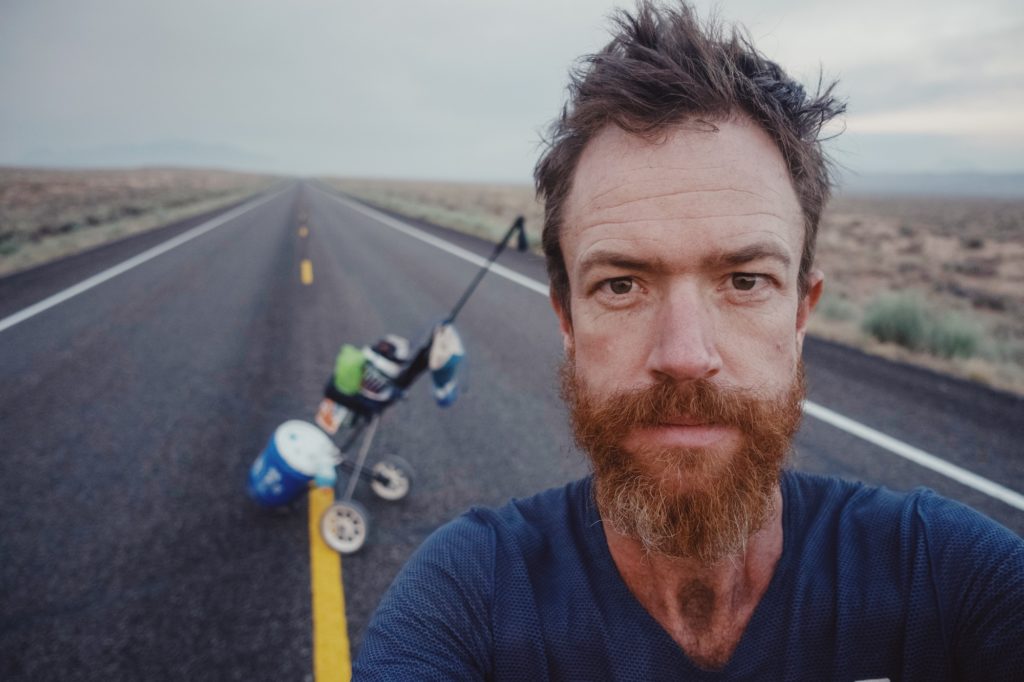
Wake up in one mountain HUT, RUN to the next HUT — eat, sleep — wake up, do it all again and do it with a group of friends. The pattern goes like this and I wanted to join… Where can I sign up?
Cancelled you say!
Unfortunately and for the second year running —no pun intended— Hut Run Hut Japan is cancelled. I had hopes of joining Rickey Gates, Anna Frost and their twenty —suckers for punishment— guests as they fastpack their way through the Hida Mountain Range (Northern Japan Alps). Not as a guest myself, they’d likely be too fast for my old legs, but as an explorer hopping to catch sight of these curious running creatures far from home. What brings Rickey so far from his local Rocky Mountains to this small volcanic island we call Japan?
Rickey, a Salomon sponsored professional athlete has not only competed in trail and mountain running races around the world —from racing the Tarahumara in the Copper Canyons, navigating the steep trails of Mont Blanc to surviving the fells (English mountains) and fell-runners (English mountain runners) of the Lake District— he has designed and documented some of the most creatives ways to run and more importantly found unique ways to learn about the places he’s run through.
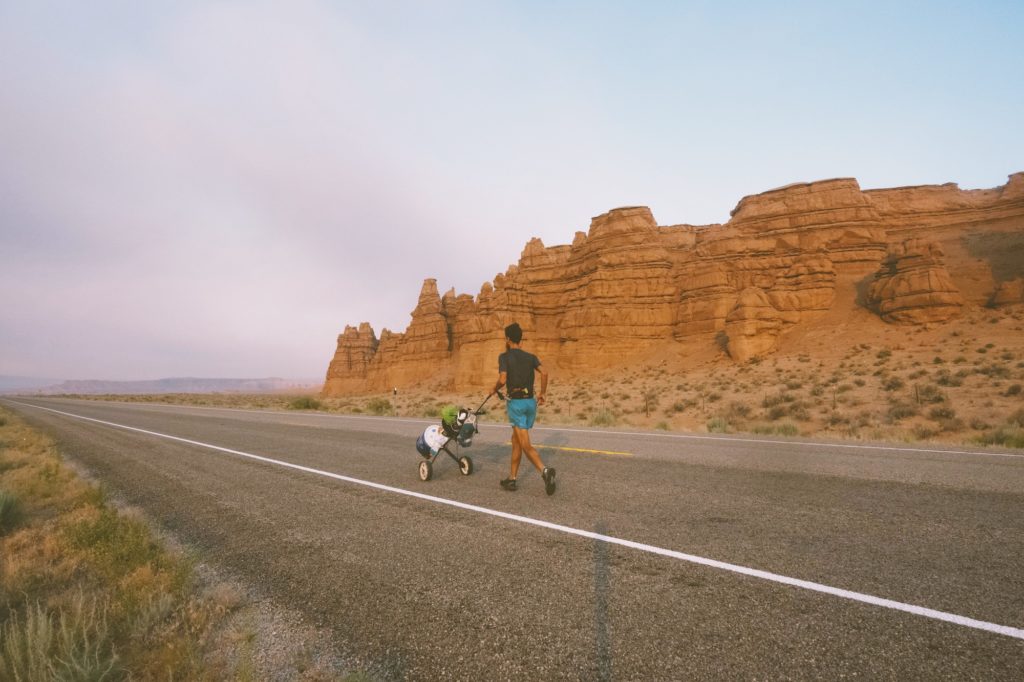
These running adventures from hut to hut grew from Rickey’s love of the mountain huts system in and around his hometown of Aspen, Colorado. Growing up he worked for the non-profit 10th Mountain Division Hut Association; a collection of some thirteen unmanned cabins 7-8 miles —easy running distance— apart. Since high school he’d dreamt of doing a lightweight run between them. About eight years ago, this adventurous high-schooler’s dream became a reality. He’s been doing Hut Run Hut Colorado regularly ever since and after an inspirational trip to Japan he added Hut Run Hut Japan.
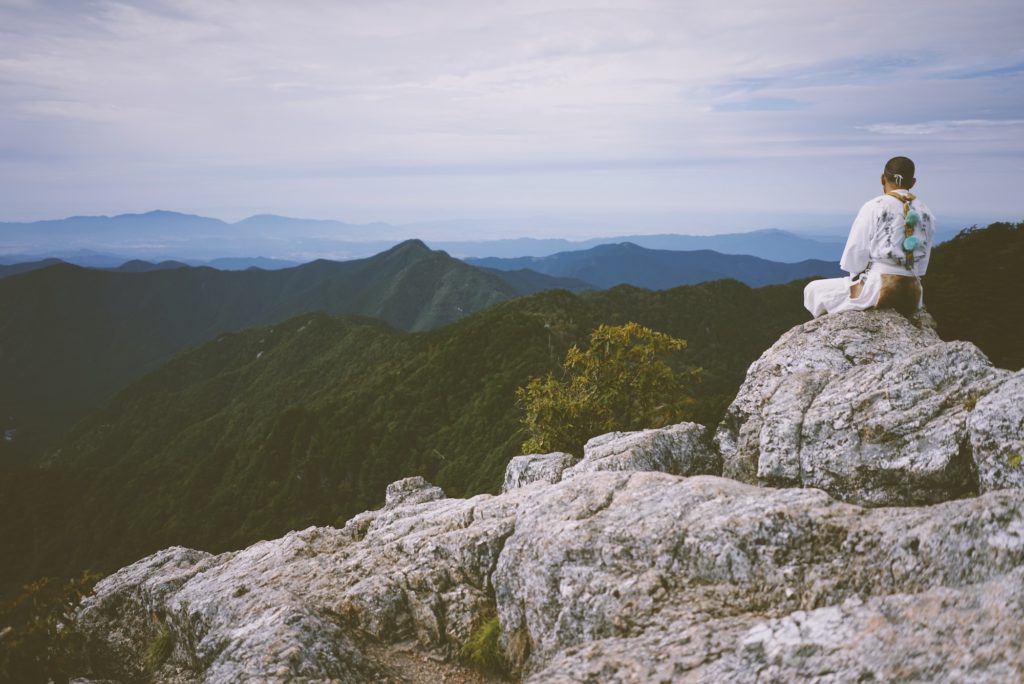
That inspirational trip was in 2015, visiting Japan for the first time with Anna to film the Salomon TV short film: Nihon. On this eye-opening trip, while filming in the Japanese alps around Hakuba and meeting the Buddhist monks of Kii Peninsula (home of the famous Kumano Kodō pilgrimage routes) Rickey began to imagine a Japanese version of Hut Run Hut. The volcanic mountains of Japan and their huts caught his imagination. Although the mountain huts or yamagoya here in Japan are different from that of his home mountains; bigger and manned in Japan — smaller unmanned in the Rockies. One key feature was the same. The pattern of huts spread out across the natural landscape spaced about 10km apart. With food and beds provided, it was easy for them to imagine fastpacking through this network carrying only the essentials. And at the end of each day arriving at a new hut, taking off your running shoes, putting on rubber slippers and enjoying the local hospitality. It was in one hut like this, during that first late Autumn visit, that he, Anna and Shinya, their local guide, had the idea of bringing Hut Run Hut to Japan.
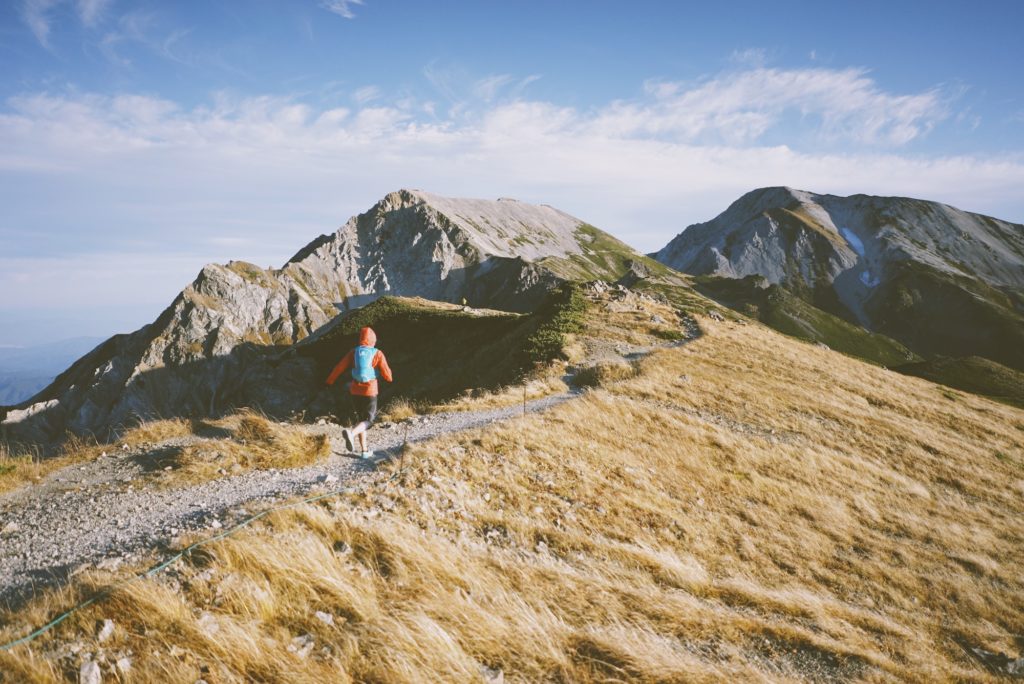
Since that first trip he loved so much, he’s been figuring out ways to return. Finally in October 2019, four years later, he returned with guest from around the world in tow eager to experience running in the Japanese mountains.
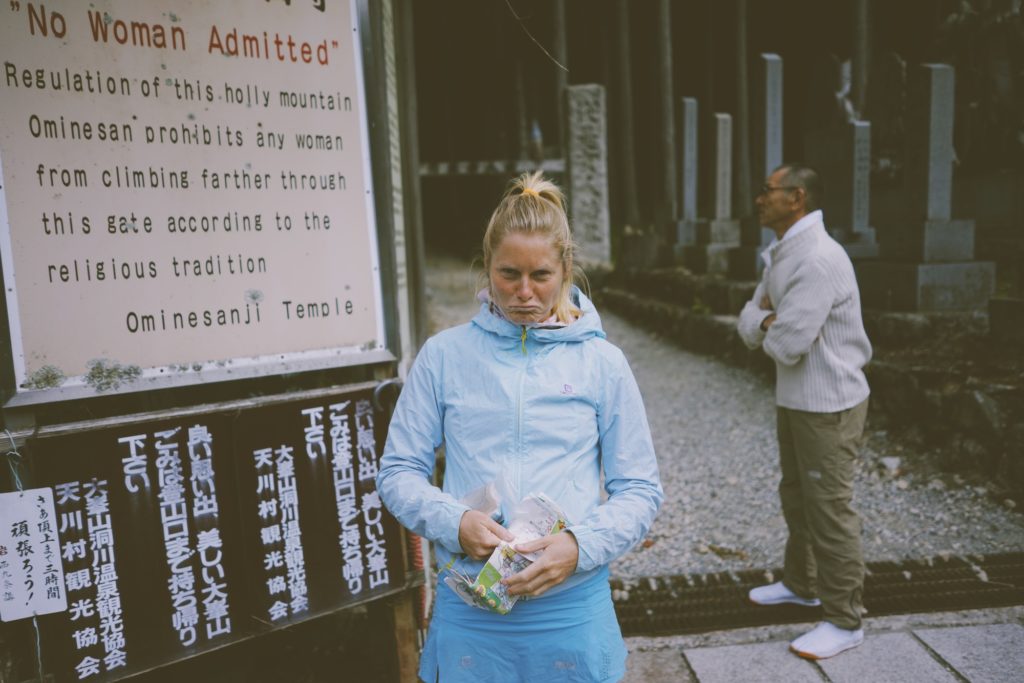
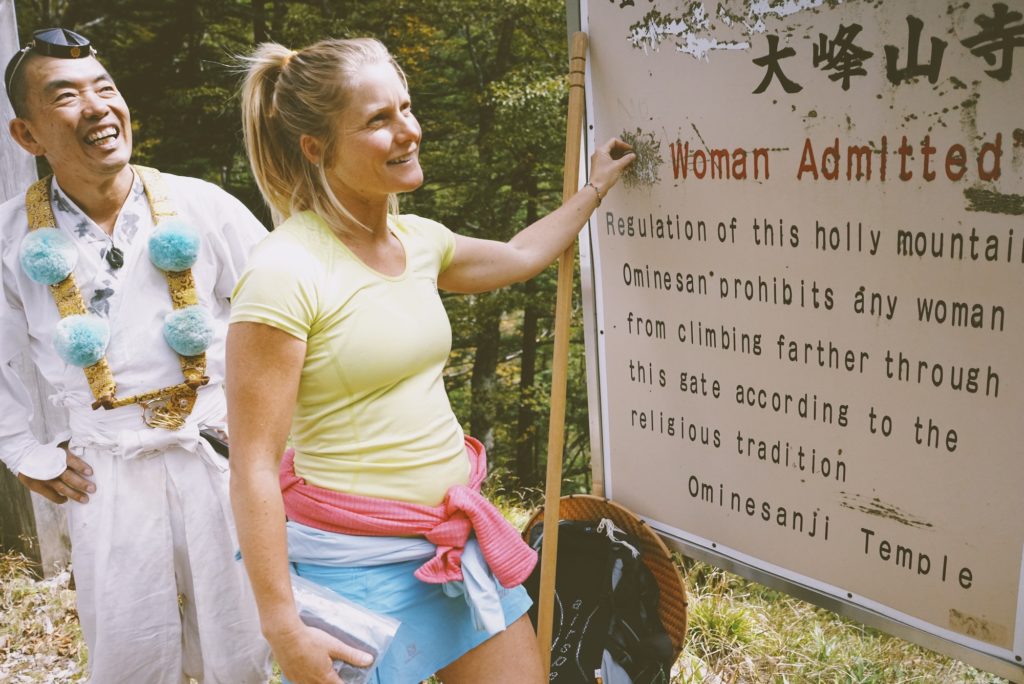
“To walk across a place is to truly know a place.”
Still this was before I knew Rickey or Hut Run Hut. I first became curious watching a seventeen minute film about this funny guy with a handlebar moustache, running around San Francisco. He called his project Every Single Street and that was exactly what he was doing… Well not exactly… it was more than just the physical act of running, ticking off or drawing a line along every street.
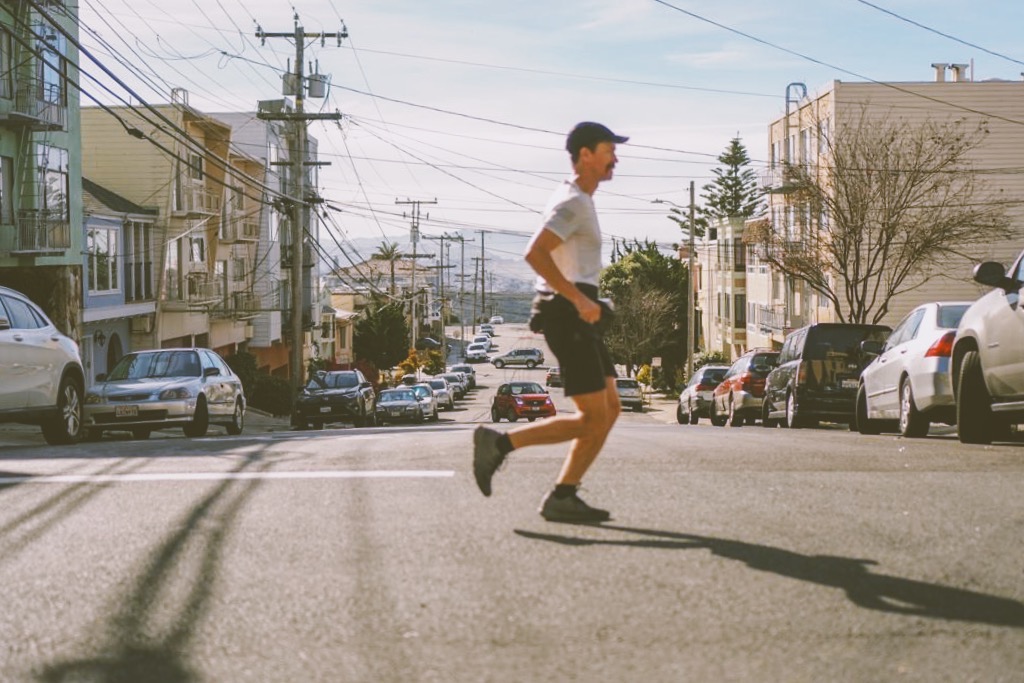
This creative project —yes creative— was designed in such a way that it literally forced Rickey to engage with San Francisco —to use his words— “extremely intimately”. A new way to experience an American city and cities in general. Learning along the way that he didn’t know the city as well as he had thought.
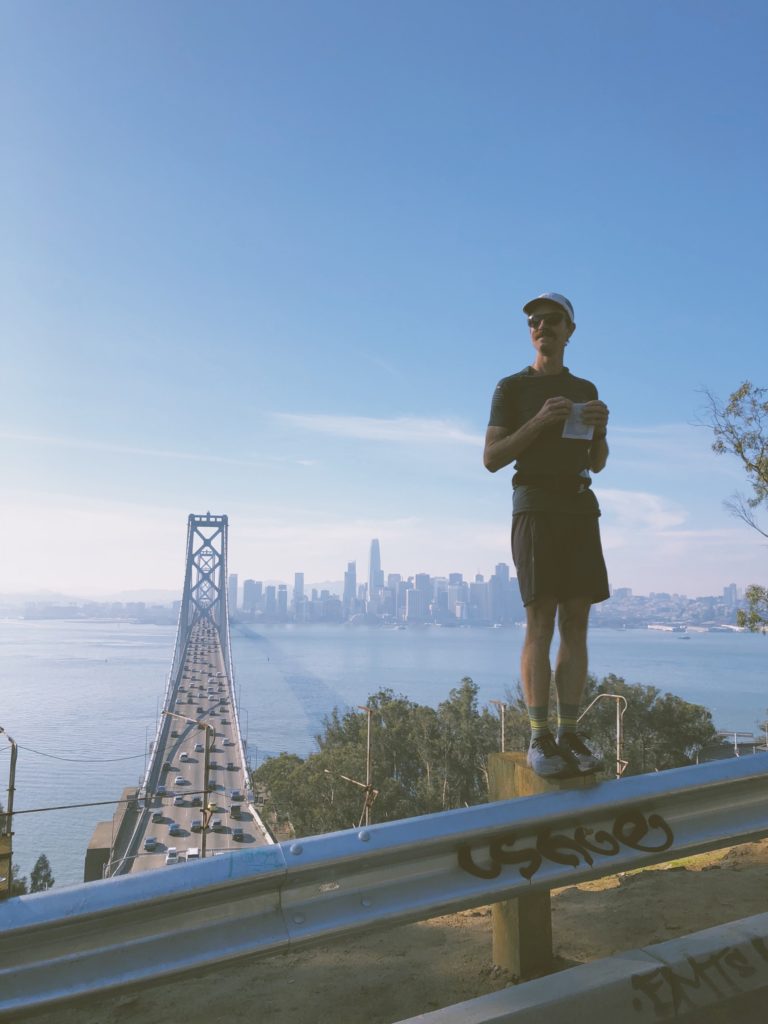
The film shows Rickey sleeping in his van each night to save time and needless repetition. As the days passed Rickey would pick out certain things, paying attention to them throughout the day —“like a treasure hunt” he told me— it was a way for him to make sense of the landscape. Tracing a line around the city, meeting people, stopping to listen to their stories, taking their photographs and photographs of patterns he found along the ways. Marks of subcultures previously unseen or evidence of social change and individual struggles. Often confronted by sights which our natural daily tendency is to divert our eyes from and avoid.
Yet, during this project Rickey paid attention to these things for better or worse, slowly noticing patterns the streets were showing him. Allowing himself to see even for a few seconds. Taking in and preserving each moment to truly begin to understand the situation in the city where he also lived. Each another layer to focus attention on and learn about the city and about human beings.
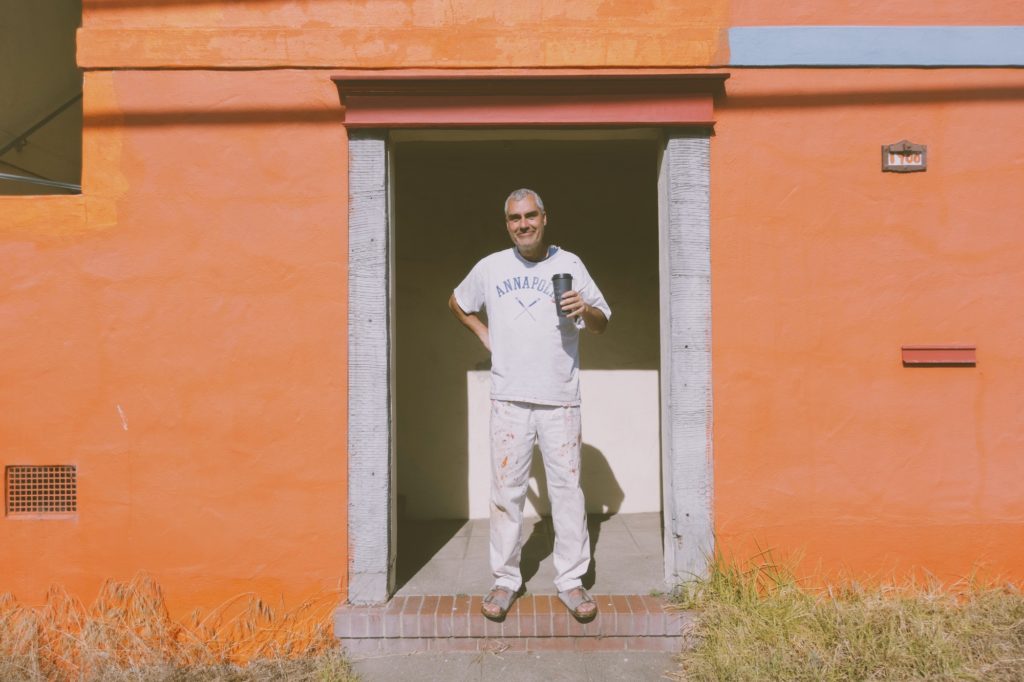
Rickey likes telling stories and the photographs he takes helps him write stories in his imagination, which in turn helps him paint a mental picture of a city, a picture of America. Of course he doesn’t know for certain the true stories behind the patterns, but collecting the photographs creates a visual representation of his journey and by showing them to others —if they are interested— his hope is that they will think about what they mean and in doing so create a story for themselves.
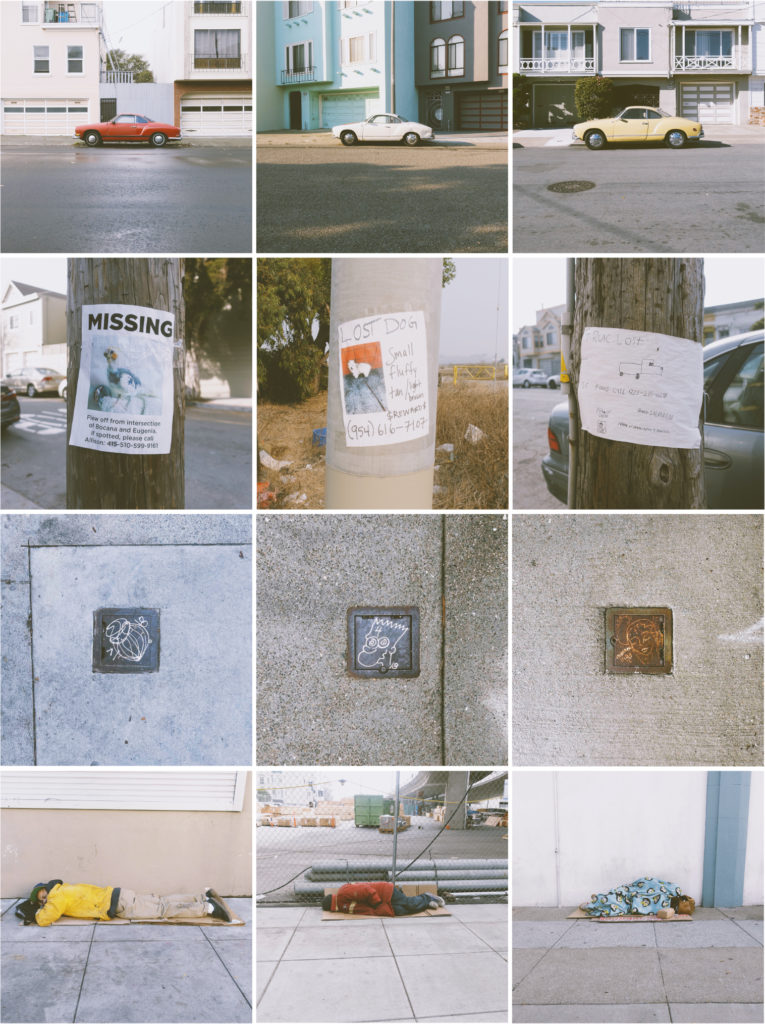
The more I got to know about the why of Rickey’s running projects the more fascinated I became. Finding similarities to my own way of exploring and understanding the world we live in. By noticing patterns, taking photographs and making stories we start to make connections, start to communicate.
These patterns are evident in his book Cross Country documenting his 3700-mile-long run —and stand-up paddle boarding— across America from Charleston in South Carolina to San Francisco (5954km). This, along with the intimate film Transamericana of the same adventure, exhibits his unique creative approach to running and storytelling. I learnt from him that running —a journey— is a creative medium, not only to get closer to a city or country, but a medium to know oneself.
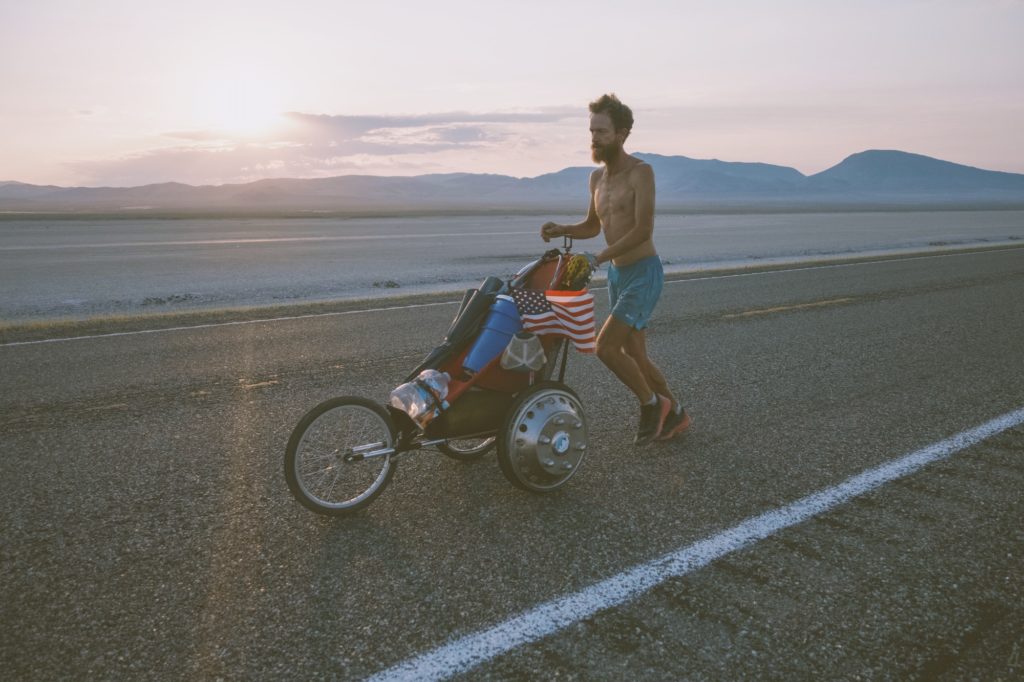
I was curious: for someone who could literally run anywhere — why run in Japan? I sent Rickey an email and he agreed to zoom with me the following week. As the sun rose above the horizon and my cat —fashionably unimpressed— sleeping in the sunlight beside me. I got to know the kind-hearted and profoundly creative Rickey Gates a little more and what was it about Japan that compels him to return?
We talked for over an hour about his running, creativity and what motivates him to do these projects. He showed me his collection of dirt from around the world and I met Maybe the dog (Maybe is the dog’s name… that confused me too).
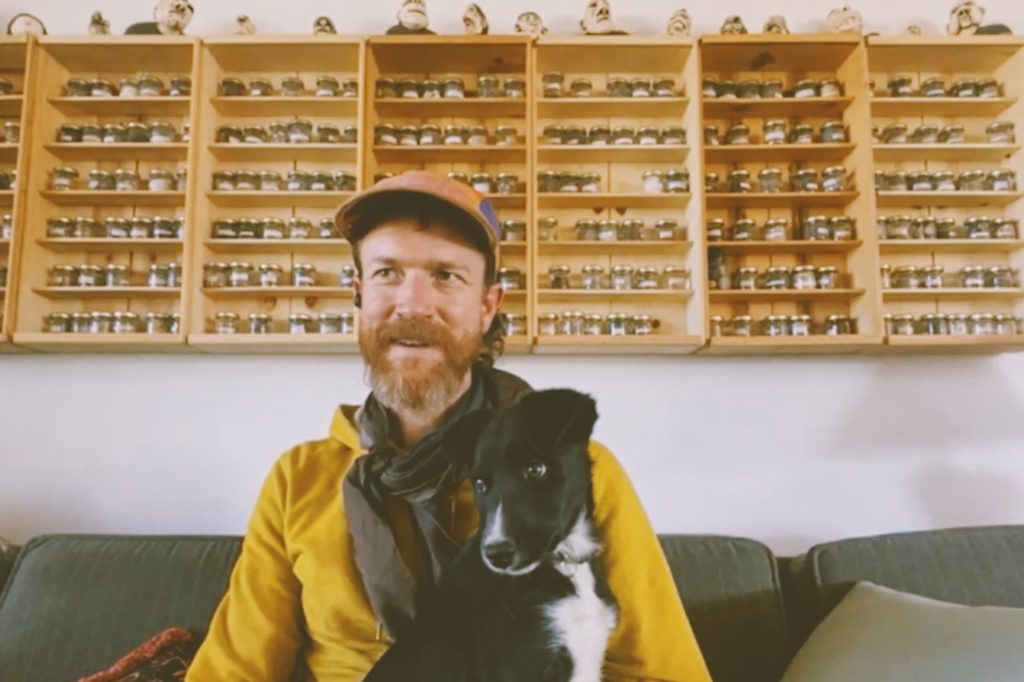
When we spoke about Japan his face lit up with enthusiasm. He remembers the truly wonderful mountains and the fantastic huts he’d visited. One called Hakuba Sanso that sleeps nearly 1000 people if you include campers… “unbelievable”. But it was the Japanese culture, the kindness, politeness & respect of the people he met —especially on the trails— that he remembers the most and keeps him wanting to return each year. “It’s special,” he said and I agreed.
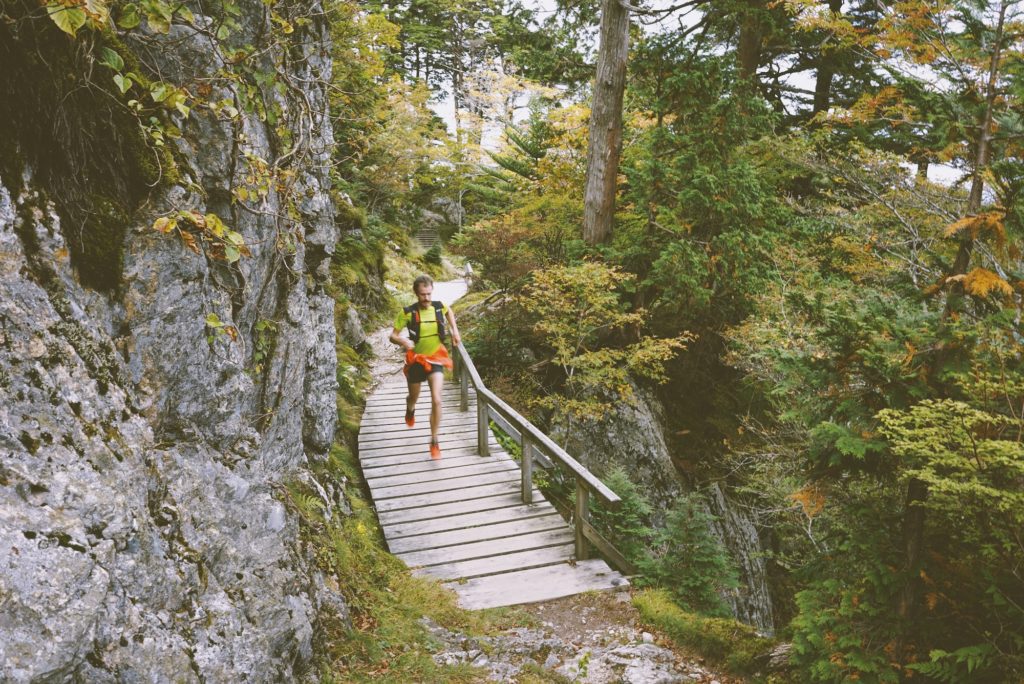
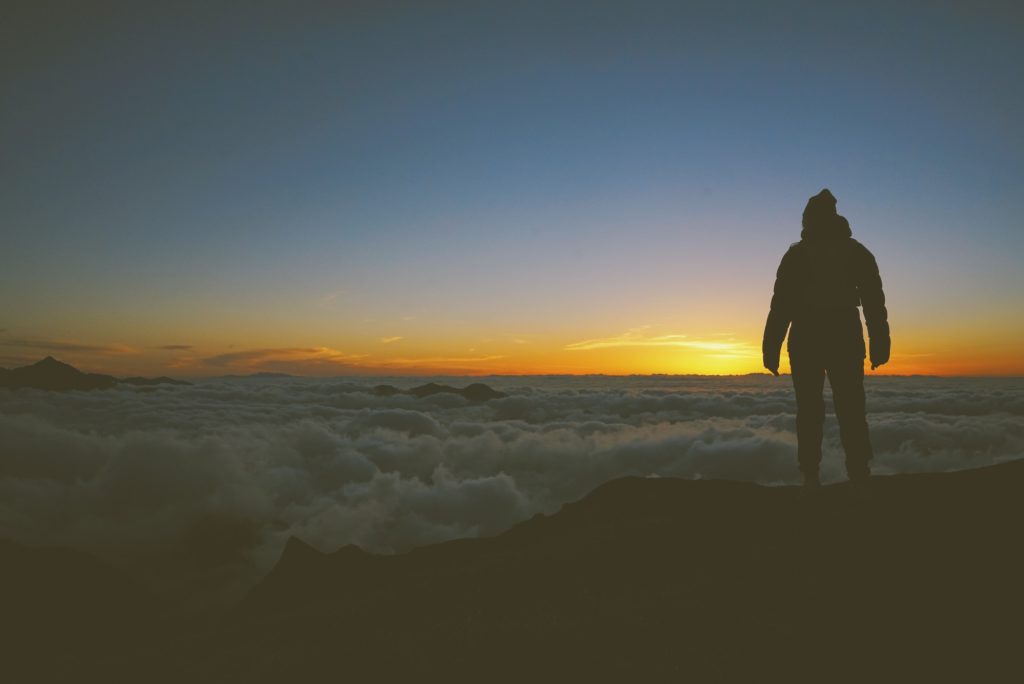
“An edible multi-sensual experience.”
There was one more thing which he loved… the food… yes the food! He recalls having some of the most amazing meals of his life while visiting Japan. Marvelled by the many small dishes and bowls of seasonal delicacies, how they bestow a beautiful meditative element to the meal. Describing kaiseki perfectly as “an edible multi-sensual experience”. This alone is more than enough to warrant a return visit for runners and travellers alike. To be able to find culture and athleticism in one place (and the food), there is nothing like Japan.
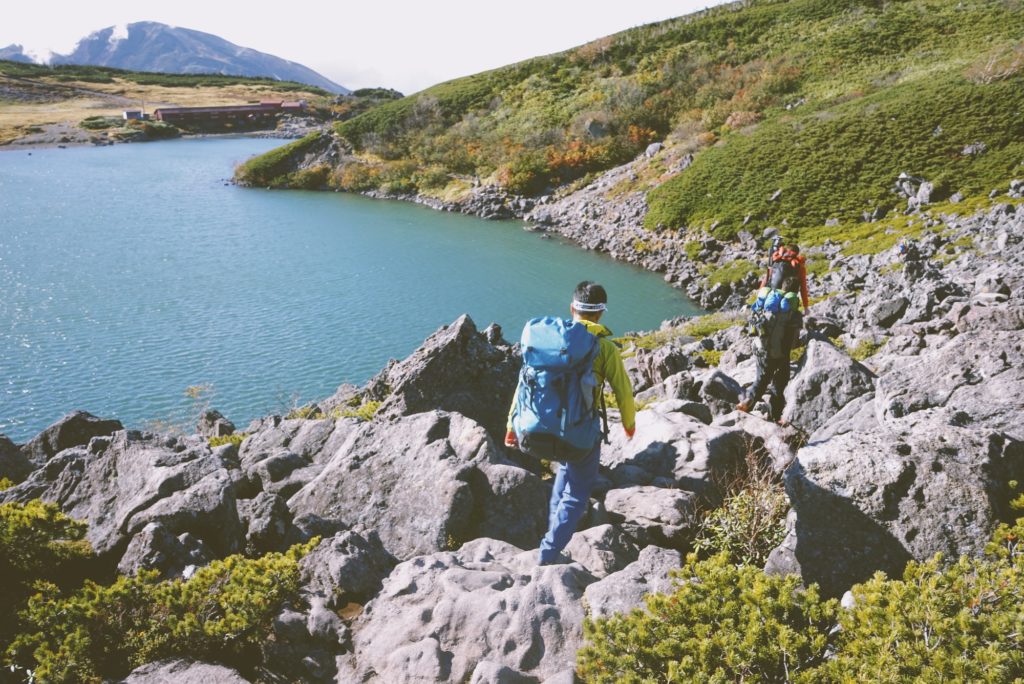
I asked about the type of guests who join his trips in Japan and wondered if any local Japanese runners participated?
It hasn’t happened yet, but he would love it if it did. Having brought runners from around the world to Japan he now has an idea to invite Japanese trail runners to the United States. On an exhausting crazy Bus Run Bus adventure introducing some of his favourite National Parks and cities. A zany cultural exchange programme for runners. Rickey explains that Bus Run Bus is similar to Hut Run Hut, with days spent running and nights —instead of sleeping in huts— everyone attempts to sleep on a bus, while it carries them through the night from National Park to National Park… and Las Vegas! Yep, I did say it’s a little crazy!
Of course, not having visited the National Parks myself or Las Vegas, I immediately wanted to join! I wondered if Rickey had any plans for his next big creative project. More specifically if he was planning one in Japan?
As a matter of fact, he has. It’s now been almost five years since his run across America and ever since he’s been thinking about which country to run across next. Both the United Kingdom or Japan come to mind, as by their very essence being islands, they have unique cultures and landscapes to explore.
“Being on my own is very important for my creative process.”
Inspired by the Book: ‘The Roads to Sata’ where author Alan Booth walked from north to south Japan in 1977, Rickey aspires to run the length of Japan. He explains that his richest and most creative travel adventures have always been done alone. Yes, it can be scary, but one person is approachable whereas two or more people become a unit who can exist separate from the culture they’re passing through. Alone you simply can’t do that, subsequently you get taken into places and people talk to you, so you have to quickly learn the local language and custom. Immediately you are immersed into the culture you are surrounded by and can focus on the creative process without compromise. He goes on to say that a real adventure doesn’t start until you are about 2 or 3 weeks into a journey. This is when the body and mind get in the pattern of living a different life.
Running from Cape Sōya; the northernmost point of Hokkaido to Cape Sata; southernmost point of Kyushu, would probably take Rickey 8-9 weeks. I smile to myself imagining the reactions of the local people he would meet along the way. And wonder what patterns and places he will see.
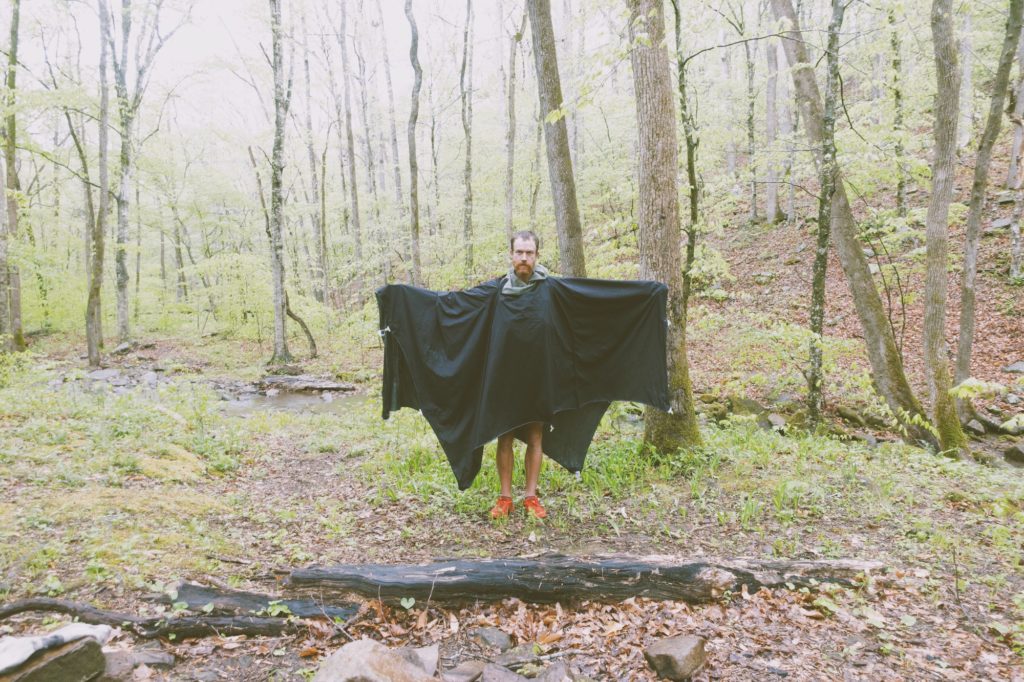
“Success is a constant journey towards happiness.”
As my time with Rickey was coming to an end, I realized that there was no way I would be able to get through all my questions. So before letting him go I had to choose one final question. I asked what his image of success was?
Over the years and after countless adventures, Rickey has wondered what his —life— purpose was many times. Yet, he has never been able come up with a clear answer. Nevertheless, he’s happy with the way his life is, ending up in a very good place. He now knows better not to stop and question what his purpose is, but to keep moving forward in acceptance. It’s what running long distances is all about and what life is all about… just keep moving. “My dog Maybe doesn’t have a purpose.”
These days his definition of success is moving towards happiness. Everything else is almost nonessential. From years living the shoestring runner’s lifestyle and seeing different cultures and people from varied economic backgrounds. He’s learned that money isn’t everything. Success is a constant journey towards happiness… always a movement… always a practice. A constant journey to get to know yourself.
…and so it goes.
James Gibson
In a time where human actions are ever more interconnected and reciprocal, James —through travel, photography, film and creative writing— is exploring the topics of ‘design your life’, ‘do-nothing design‘ and ‘well-being’ from a viewpoint of natural regenerative design. The whole time asking the question: Do you know what good health —micro to macro— feels like?
All photographs courtesy of Rickey Gates – Copyright Rickey Gates 2021
Find Rickey Gates
Instagram: @rickeygates
Twitter: @rickeygates
Homepage: www.rickeygates.com
Find James Gibson
Instagram: @bigson2000
Homepage: www.arukari.co
Sign up to his email newsletter here.











